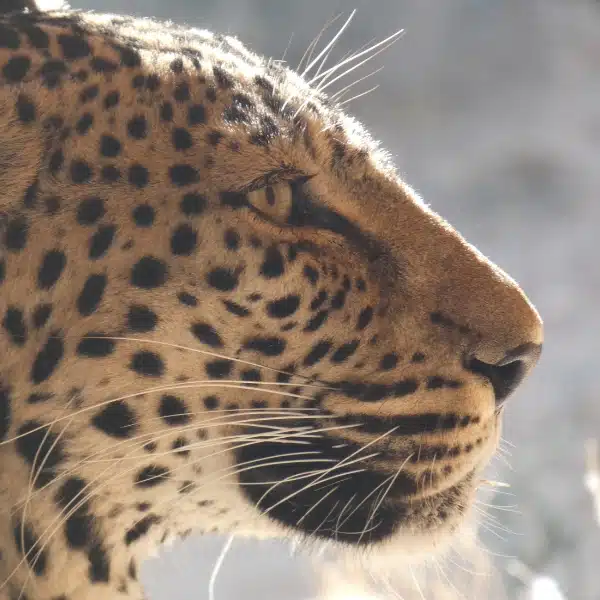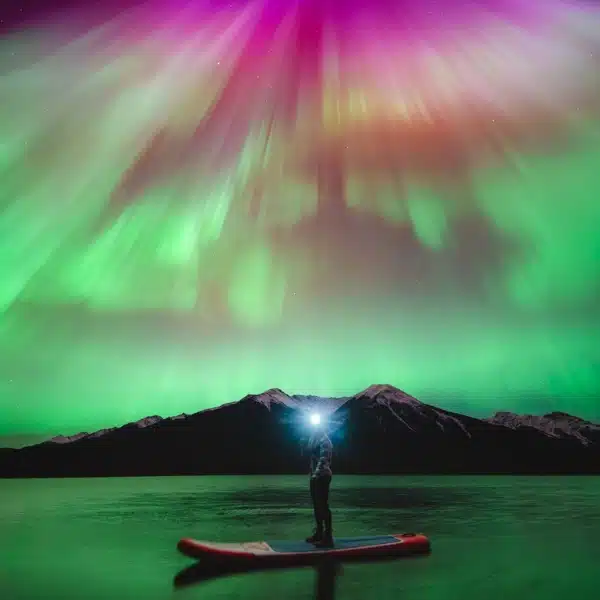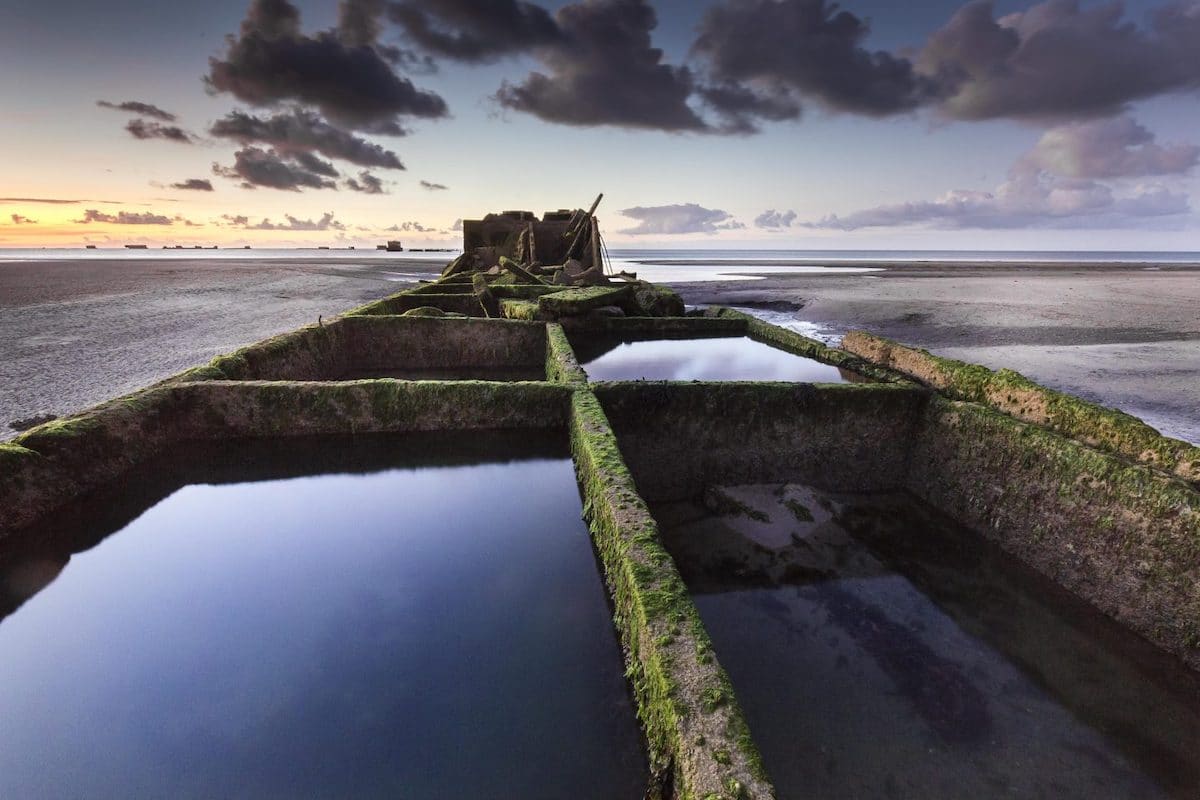
Stéphane Hurel. Arromanches Mulberry Harbor in Normandy, France. Overall Winner.
In September, during the tides of Equinoxe, it is possible to reach on foot the dikes of the artificial harbor of Arromanches (imagined by Churchill in 1944 to save Europe from Nazism). That day was the end of the summer with its warm lights, this time of the day called ‘golden hour.’”
The long history of humankind has left us with many historical sites, and one photography contest specifically celebrates these amazing places. Aptly called Historic Photographer of the Year Awards, the competition showcases the best images of historical and cultural sites from around the world. The winning and shortlisted photos highlight an array of places. From UNESCO sites to relics of wars to breathtaking interior spaces, the results are a beautiful way to reflect on the past and consider how it intersects with the present.
Now in its third year, the Historic Photographer of the Year Awards named one overall winner as well as winners in two categories: Historic England and History Short Filmmaker. The rest of the highly regarded entries are shortlisted. So, who took home the top prize this year? Stéphane Hurel was given this honor for his haunting portrait of Arromanches Mulberry Harbor in Normandy, France. These temporary, portable harbors were created by the U.K. during World War II to make it quicker to deliver cargo during the Allied invasion of Normandy in 1944. Of the winning entry, judge Dan Korn remarked, “The wonderful use of light, perspective, and composition to produce an image which conveys the futility and yet—in the case of World War II in particular—the necessity of war, to defeat the forces of tyranny and oppression, made this stand out from the other wonderful entries.”
The Historic Photographer of the Year Awards was created by Trip Historic, an online travel guide to the world’s historic sites. They awarded Hurel a cash prize of £400, and the category winners each won a “unique money-can’t-buy experience.” Scroll down to see some of the incredible shortlisted winners and then check out the rest of the photos here.

JP Appleton. Roker Pier-Sunderland in North East England. Historic England Winner.
“This shot was taken on a trip to the North East. I have seen many images of this splendid structure but I wanted to capture something a little different.”

Anna Kaunis. Moscow, Russia. Shortlisted.
Changing Moscow.
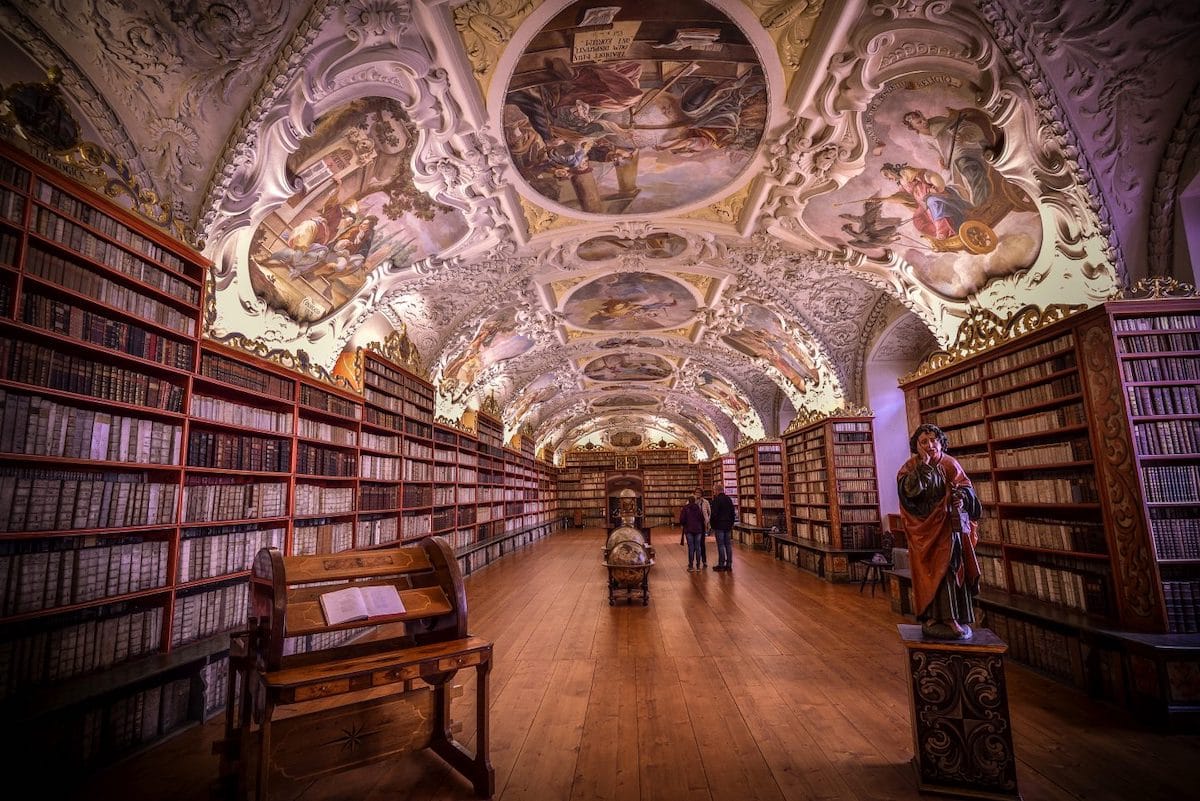
Debdatta Chakraborty. Strahov Library in Prague, Czech Republic. Shortlisted.
“Strahov Monastery is a Premonstratensian abbey founded in 1143 by Jindřich Zdík, Bishop John of Prague, and Vladislaus II, Duke of Bohemia. It is located in Strahov, Prague, Czech Republic.”

Debdatta Chakraborty. Jama Masjid in Delhi. Shortlisted.
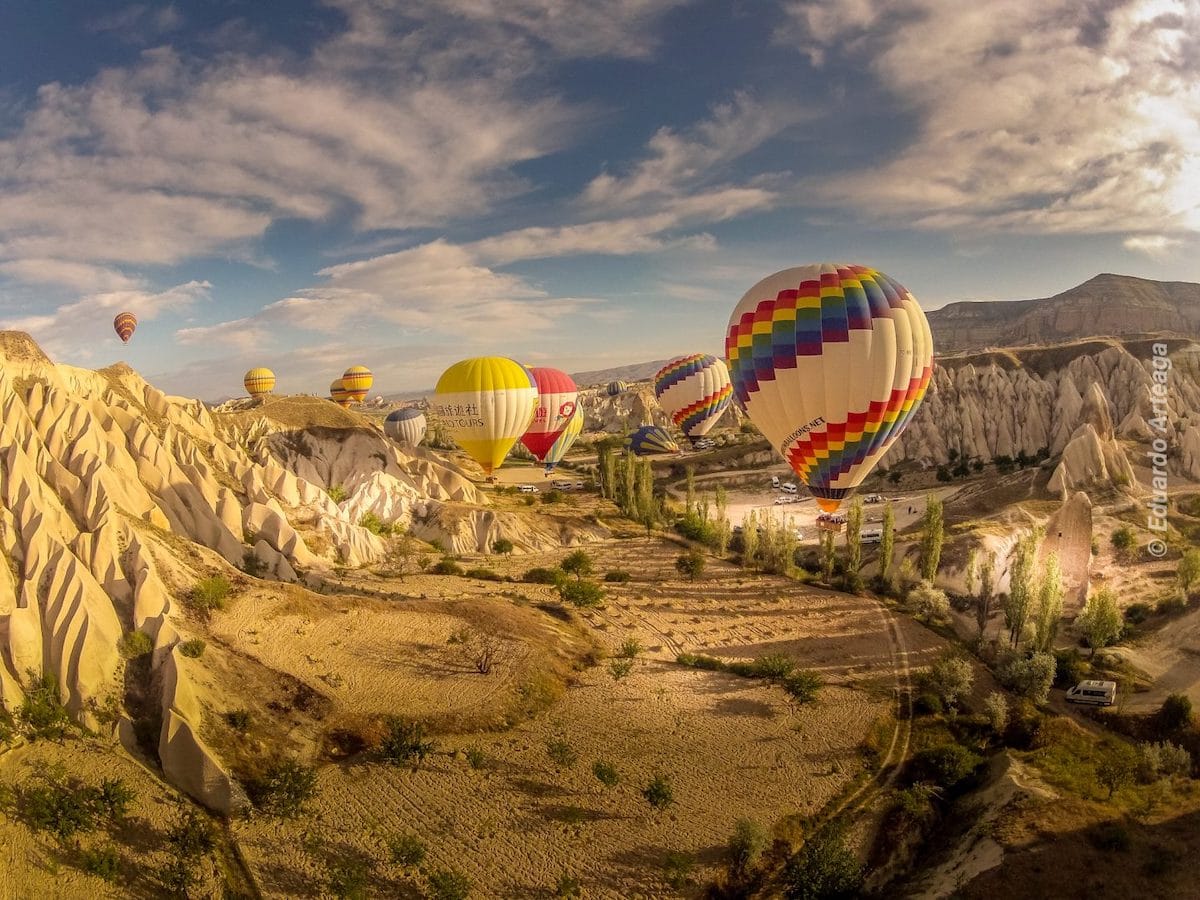
Eduardo Arteaga. Cappadocia, Turkey. Shortlisted.
“Hot air balloon ride in Cappadocia.”

Daniel Burton. Petra, Jordan. Shortlisted.
“Anyone who loves Indiana Jones and the Last Crusade has an image of the Treasury at Petra hardwired into the brain. The Nabataean trading city, in southern Jordan, lies hidden amidst the Wadi Musa (the Valley of Moses) and is still relatively inaccessible. After a winding trek through the Siq, the grand caravan entrance into Petra, visitors get a glimpse of the city’s most famous building, ‘Al Khazneh’. This photograph was taken in December 2018 at dawn, with only a solitary camel for company.”
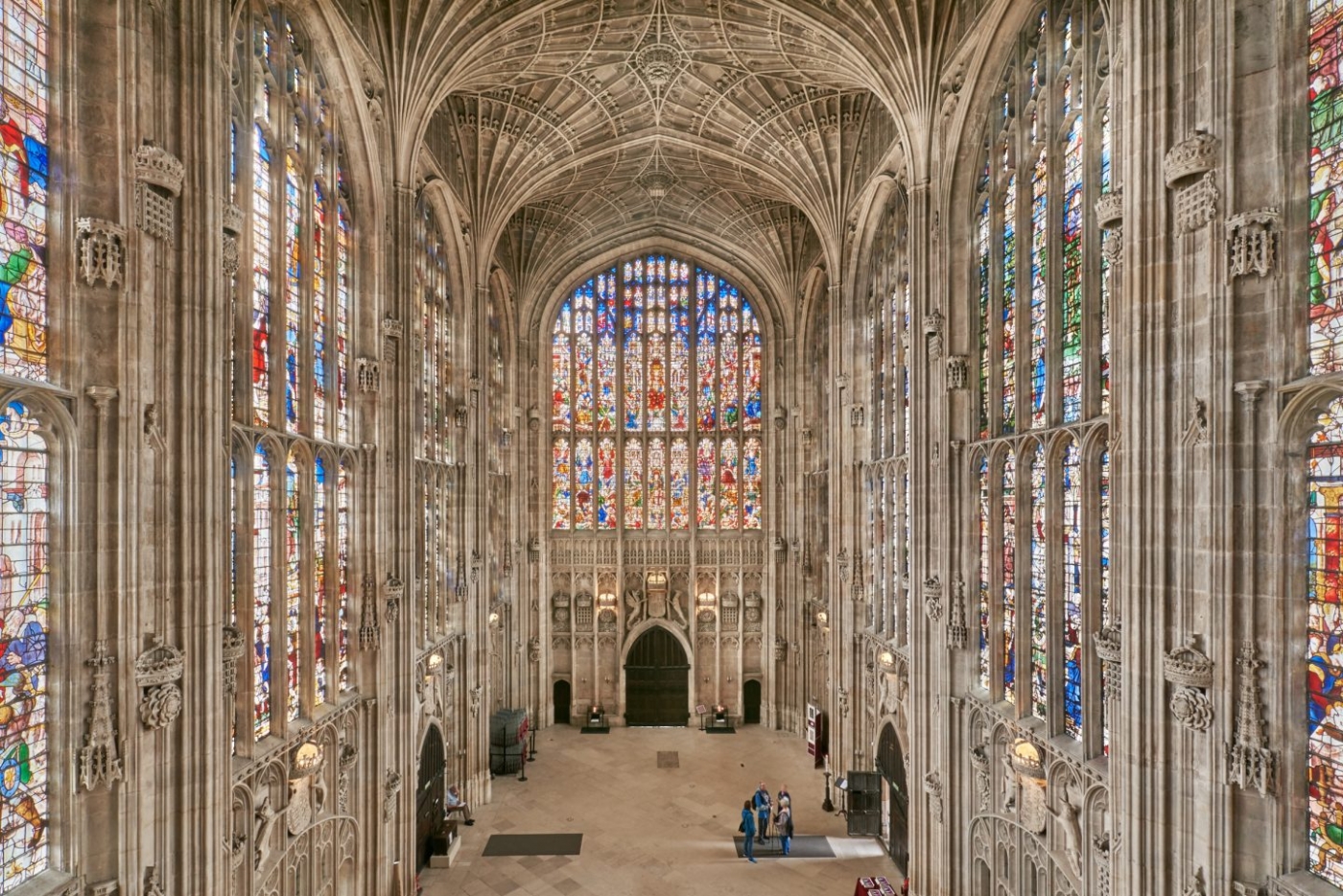
Sara Rawlinson. King’s College Chapel at the University of Cambridge in England. Shortlisted.
“Lofty Heights. The west end of King’s College Chapel as viewed from a cherry picker. King’s College, University of Cambridge.”

Margaret McEwan. Redsand Seafort in the Thames Estuary. Shortlisted.
“This magnificent structure was an incredible feat of engineering. The Seafort defended our country from enemy aircraft in WW2. Reminiscent of a science fiction alien, it is an imposing sight in the Thames Estuary.”

Matthew Emmett. Yarnbury Lead Mines in Yorkshire, England. Shortlisted.
“A concrete radar station slowly sinks into the sand at the shoreline of Warden Point on the Isle of Sheppey. It used to sit on the cliff tops but coastal erosion saw to that.”

Vinod Kumar Kulkarni. Shravanabelagola Temple in Karnataka, India. Shortlisted.
“Rituals are in the centre of everything we do, the way we live and it is something which we should continue following. It is our responsibility to pass on our culture and all the rituals to the next generation so that it can live for many more years to come. This was shot in a small town of Karnataka, Shravanabelagola, where thousands of devotees, especially from Jain religion, come every month to offer their prayers to Lord Bahubhali..”

Daniel Burton. Stonehenge in England. Shortlisted.
“Stonehenge in Wiltshire, England, is the most striking cultural icon of Britain’s ancient past. The site comprises giant standing monoliths, set within earthworks, which tower over the Salisbury plain like a beacon. The function and construction of Stonehenge both remain a mystery, but it is clear that the site was and remains important to the British people. Happily, English Heritage offers intimate access to the circle at dawn (when this photo was taken) and dusk, as well as on the solstices.”

Sara Rawlinson. Horyu-ji Temple near Nara, Japan. Shortlisted.
“A small child walks amongst some of the oldest wooden buildings in the world. The ancient Horyu-ji Temple complex, Nara Prefecture, Japan was built in 607 and was one of the earliest UNESCO World Heritage Sites in the country.”

Sean M. Blake. Elie Ness Lighthouse in Scotland. Shortlisted.
“My family and I were exploring the East coast of Scotland, walking along the coastal path and stumbled upon Elie Ness Lighthouse.”

Annabelle Morley-Holroyd. Naeroyfjord, Norway. Shortlisted.
“Looking out over the UNESCO site of Naeroyfjord on the banks of Gudvangen.”











































































